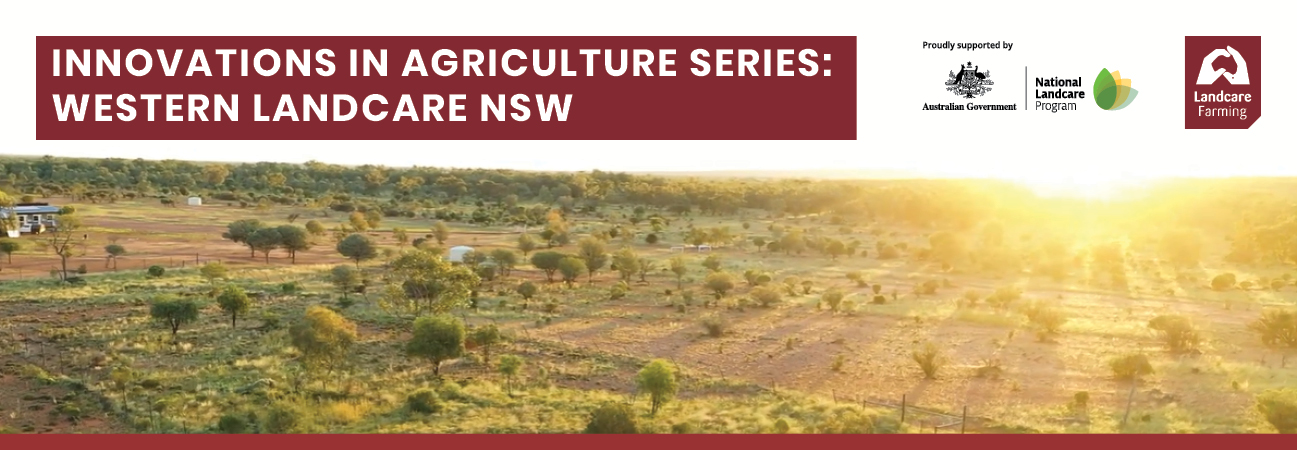
Treating a potentially lethal condition – Invasive Native Scrub
INS (Invasive Native Scrub) is a significant issue impacting large areas of central and western NSW, posing a formidable threat to the health and wellbeing of the landscape and agricultural productivity.
Andrew Mosely, his wife Megan and their daughters Jessica and Emily live on their family business, Etiwanda Station, 90 kilometres south of Cobar. Andrew first identified INS as a major issue when he took over the 20,000ha from his parents 25 years ago. Overgrowth of Turpentine Bush (Eremophila sturtii), False Sandalwood (Eremophila Mitchellii), Narrowleaf Hopbush (Dodonaea viscosa) and White Cypress Pine (Callitris glaucophylla) had rendered areas of the farm unproductive and unprofitable.
However, since introducing a management program, with the support of his local Landcare group, 15 years ago Andrew has reversed the situation, doubled his carrying capacity and has a landscape in much better shape.
“We’re growing grass in places we thought we’d never grow grass before,” he said.
INS refers to the increase in density of native shrubs which out-compete native grasses for essential moisture, light and nutrients, leading to a loss of critical groundcover and biodiversity. While the issue of INS in Western NSW has been formally recognised for more than a century (following the Royal Commission into Matters Affecting the Lands Department and Western Lands Commission “White Royal Commission”, (1935–1936), its impacts have only increased due to high rainfall periods in the 1950s and 1970s, as well as the combination of the terrible drought & commodity price drops in the 1990s, which impacted stocking regimes and further reduced groundcover.
The loss of groundcover at Etiwanda Station resulted from a proliferation of INS had resulted in a decrease in soil biology and reduced soil structure and stability, making the landscape more susceptible to wind and water erosion. This made it difficult for locally native grasses to reestablish, and Andrew found the reduction in soil health and groundcover was significantly impacting productivity.
“The soil was hardening. We were getting that hard capped soil, so a lot of run off with very little biomass production because the ground would dry out quickly,” Andrew said. “Carrying capacity really hit a low point. Productivity hit a low point.”
It was holistic management training which empowered Andrew to design a management program to take control of INS. Practice changes he implemented included:
- Restoring and improving groundcover
- Creating an environment for the successful spread of perennial grasses including
- Curly Windmill grass (Enteropogon acicularis and E. ramosus)
- Mulga Mitchell Grass(Thyridolepis mitchelliana)
- Cotton & Finger Panic (Digitaria spp.)
- Native Millet (Panicum decompositum)
- Redgrass (Bothrichloa macra)
- Managing total grazing pressure (TGP)
Underpinning this was infrastructure investment and installing perimeter fencing around the entire property. Internal fencing increased the number of paddocks to 80, allowing the operation greater control over the movement of animals, including feral goats and native species. This gave the Mosely’s the opportunity to transition the goat operation from a predominately harvest enterprise to a more managed breeding and grazing business with a greater ability to manage stock movement and rest paddocks and pasture. The business produces White Dorper sheep, cattle and meat goats.
“Rest and recovery are the critical parts,” Andrew said. “Grasses need a chance to grow, flourish and put down root mass for the next dry period.”
Andrew’s TGP fencing controls 90% of the grazing pressure, and the improvement in pasture and soil health has led to an increase in productivity. In the past 15 years he has doubled his Dry Sheep Equivalent (DSE) days per hectare per 100mm of rainfall, which has effectively doubled his carrying capacity.
“We’re running more animals on a smaller area than Mum and Dad did, and we’ve got much better groundcover, a better diversity of species, and we’re seeing those good perennials in areas where we previously didn’t see them,” Andrew said.
Reflecting on his work, Andrew said he came to realise INS wasn’t a problem, rather the symptom of previous management regimes and climate impacts.
“We now understand that if we get our soil and grazing management right, keep our soils covered and look after our perennials, we’re seeing the landscape shift back toward being a scattered open grassland,” Andrew said.
This case study was produced as part of the Landcare Farming Innovations in Agriculture Series. Supported by the Australian Government’s National Landcare Program, the Landcare Farming Innovations in Agriculture Series is managed in partnership by Landcare Australia and the National Landcare Network.
For more information on Western Landcare NSW and their projects visit: https://www.westernlandcarensw.com.au/
Explore the following resources to find out more about managing similar environments:
- Managing invasive native scrub to rehabilitate native pastures and open woodlands (Local Land Services)
- Demonstrating implementation of invasive native scrub property vegetation plans (Australian Rangelands Society)
- Infrastructure for goats – including TGP fencing (MLA)
More Innovations in Agriculture stories from Western Landcare NSW:



